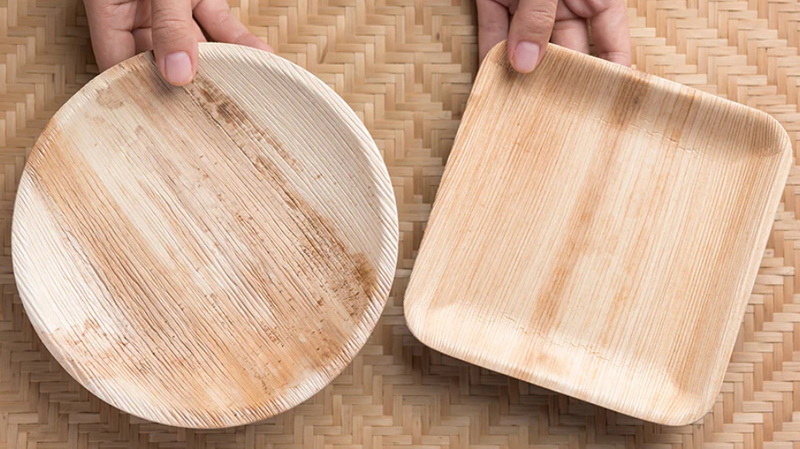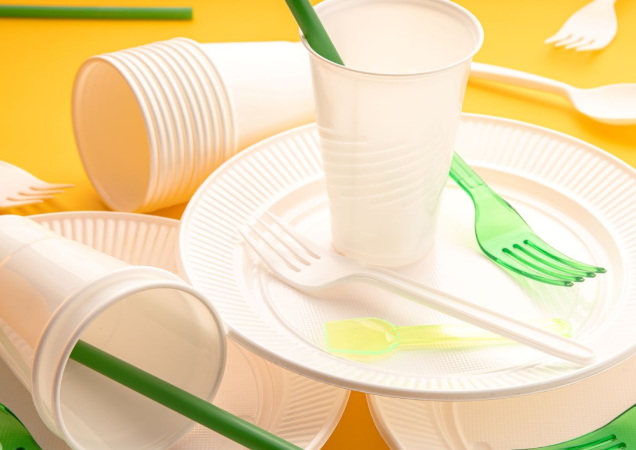
Content Menu
● Introduction to Biodegradable Disposable Plates
>> Materials Used
● Environmental Impact
>> Reduces Plastic Waste
>> Lower Carbon Footprint
>> Non-Toxic Decomposition
● Challenges and Limitations
>> Limited Durability
>> Higher Cost
>> Limited Availability
● Market Trends and Growth
>> Technological Advancements
>> Customization and Branding
● Tips for Switching to Biodegradable Disposable Plates
● Case Studies: Successful Adoption
● Consumer Awareness and Education
● Future Prospects
● Conclusion
>> FAQs
>> 1. What materials are used to make biodegradable disposable plates?
>> 2. How long do biodegradable disposable plates take to decompose?
>> 3. Are biodegradable disposable plates more expensive than traditional plates?
>> 4. Can biodegradable disposable plates be reused?
>> 5. Do biodegradable disposable plates require specialized composting facilities?
● Citations:
In recent years, the use of biodegradable disposable plates has gained significant attention due to their potential to reduce environmental pollution. These plates are made from natural materials such as bamboo, sugarcane, and palm leaves, which can decompose naturally without leaving toxic residues. However, the question remains: are biodegradable disposable plates truly eco-friendly?

Introduction to Biodegradable Disposable Plates
Biodegradable disposable plates are designed to offer a sustainable alternative to traditional plastic or paper plates. They are typically made from renewable resources, which can be composted and turned into nutrient-rich soil. This process not only reduces waste but also supports sustainable agriculture by providing organic matter for plant growth.
Materials Used
The most common materials used for biodegradable disposable plates include:
- Sugarcane Bagasse: A byproduct of sugarcane processing, known for its durability and heat resistance.
- Bamboo: Naturally strong and flexible, often used for plates and utensils.
- Palm Leaves: Dried areca palm leaves pressed into shapes for plates and bowls, offering a unique texture and 100% natural composition.
- Cornstarch: Processed into polylactic acid (PLA), a bioplastic used for cutlery and cups.
Environmental Impact
The environmental impact of biodegradable disposable plates is significantly lower than that of traditional disposable plates. Here are some key benefits:
Reduces Plastic Waste
Unlike plastic, which takes hundreds of years to decompose, biodegradable disposable plates break down naturally within a few months, reducing plastic waste in landfills and oceans.
Lower Carbon Footprint
Made from renewable resources, these plates have a lower carbon footprint compared to plastic, which is derived from fossil fuels.
Non-Toxic Decomposition
They decompose into organic matter without releasing harmful chemicals, supporting a healthier environment.
Challenges and Limitations
Despite their eco-friendly nature, biodegradable disposable plates face several challenges:
Limited Durability
These plates may not be as durable as plastic or paper plates, especially when handling hot or heavy foods.
Higher Cost
The cost of biodegradable disposable plates is generally higher than traditional disposable plates, which can deter businesses and consumers.
Limited Availability
Not all regions have easy access to biodegradable disposable plates, limiting their widespread adoption.

Market Trends and Growth
The demand for eco-friendly disposable plates is rising globally, driven by increasing environmental awareness and regulatory bans on single-use plastics. In the USA, states like California and New York are leading the shift towards biodegradable options, with major food chains and event caterers adopting materials like bagasse and bamboo-based plates[4]. The global disposable plates market is projected to grow at a CAGR of 3.6% through 2035, with a significant focus on sustainable materials[4].
Technological Advancements
Technological advancements are enhancing the functionality of biodegradable disposable plates. Improved manufacturing techniques and water- and grease-resistant coatings are making eco-friendly options more durable and practical for various uses[4].
Customization and Branding
The trend of customization and branding on disposable plates is growing, allowing businesses to enhance their brand visibility while promoting sustainability[4].
Tips for Switching to Biodegradable Disposable Plates
To make the transition to biodegradable disposable plates smoother, consider the following tips:
1. Look for Certified Biodegradable Plates: Ensure that the plates meet environmental standards.
2. Choose Sustainable Materials: Opt for materials like bamboo, sugarcane, or palm leaves.
3. Compost Properly: Dispose of plates in compost bins or facilities to maximize their eco-friendly benefits.
4. Buy in Bulk: Reduce packaging waste by purchasing in larger quantities.
Case Studies: Successful Adoption
Several companies and events have successfully adopted biodegradable disposable plates as part of their sustainability initiatives. For instance, major fast-food chains have started using biodegradable plates made from sugarcane bagasse, significantly reducing their plastic waste output. Similarly, large-scale events like festivals and corporate gatherings are opting for compostable plates to minimize environmental impact.
Consumer Awareness and Education
Consumer awareness plays a crucial role in the adoption of biodegradable disposable plates. Educating consumers about the benefits of these plates, such as reduced plastic waste and lower carbon footprint, can encourage more people to make the switch. Additionally, highlighting the composting process and how it contributes to sustainable agriculture can further enhance consumer engagement.
Future Prospects
The future of biodegradable disposable plates looks promising, with ongoing innovations aimed at improving durability and affordability. As governments worldwide enforce stricter regulations on single-use plastics, the demand for eco-friendly alternatives is expected to rise significantly. The integration of smart packaging solutions, such as QR codes for sustainability tracking, will also enhance consumer education and engagement.
Conclusion
In conclusion, biodegradable disposable plates offer a more eco-friendly alternative to traditional disposable plates. While they present some challenges, their benefits in reducing plastic waste, lowering carbon emissions, and promoting sustainable practices make them a valuable choice for those seeking to minimize their environmental footprint.

FAQs
Here are some frequently asked questions about biodegradable disposable plates:
1. What materials are used to make biodegradable disposable plates?
- Biodegradable disposable plates are typically made from natural materials such as sugarcane bagasse, bamboo, palm leaves, and cornstarch.
2. How long do biodegradable disposable plates take to decompose?
- The decomposition time varies depending on the material and conditions. Generally, they decompose within 3 to 6 months in composting facilities.
3. Are biodegradable disposable plates more expensive than traditional plates?
- Yes, biodegradable disposable plates are usually more expensive due to the higher cost of raw materials and eco-friendly production processes.
4. Can biodegradable disposable plates be reused?
- While most are designed for single use, some types like palm leaf plates can be gently washed and reused a few times for dry foods.
5. Do biodegradable disposable plates require specialized composting facilities?
- While they can decompose in home compost bins, industrial composting facilities provide optimal conditions for faster decomposition.
Citations:
[1] https://ecoclicky.com/en/biodegradable-disposable-plates/
[2] https://www.anchenggy.com/blog/disposable-plates-vs-compostable-plates-making-eco-friendly-choices.html
[3] https://cosmosecofriends.com/the-rise-of-biodegradable-plates-a-sustainable-dining-solution/
[4] https://www.accessnewswire.com/newsroom/en/industrial-and-manufacturing/disposable-plates-market-to-expand-at-36-cagr-through-2035-driven-by-fo-983798
[5] https://naturalpanaa.com.au/the-impact-of-using-biodegradable-plates-on-our-environment/
[6] https://naturalpanaa.com.au/key-benefits-and-uses-of-biodegradable-plates/
[7] https://droppe.com/blog/article/how-to-choose-the-best-material-for-disposable-plates-paper-plastic-or-compostable/
[8] https://www.marketresearchfuture.com/reports/biodegradable-tableware-market-8629
[9] https://www.greenwashingindex.com/eco-friendly-or-silent-polluter/
[10] https://www.linkedin.com/pulse/what-benefits-using-compostable-plates-ecosoulhome-4rqzc
[11] https://www.ecodynetableware.com/post/palm-leaf-plates-vs-plastic-plates
[12] https://www.mdpi.com/2071-1050/17/4/1434
[13] https://www.globenewswire.com/news-release/2024/10/29/2970595/28124/en/Biodegradable-Disposable-Tableware-Market-Research-2024-2030-with-Analyst-Recommendations-Expand-Product-Range-and-Customization-Options-Promote-Circular-Economy-Practices.html
[14] https://greenpaperproducts.com/blog/the-importance-of-eco-friendly-disposable-tableware-for-food-businesses
[15] https://www.bioleaderpack.com/he/product/biodegradable-plastic-plates/
[16] https://www.linkedin.com/pulse/palm-leaf-plates-vs-plastic-which-one-choose-guilt-free-mealtime-hdi3c
[17] https://de.duni.com/en/magazin/einwegteller
[18] https://www.verifiedmarketresearch.com/product/disposable-plates-market/
[19] https://www.greenmatters.com/sustainable-living/eco-friendly-disposable-plates
[20] https://www.linkedin.com/pulse/biodegradable-disposable-plates-why-make-switch-eco-clicky

















